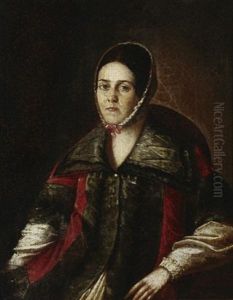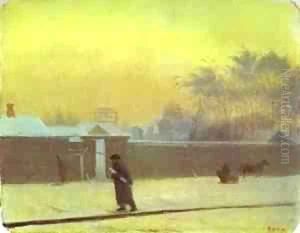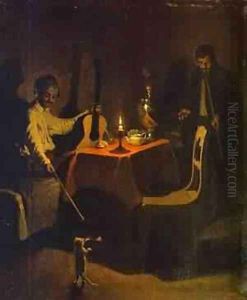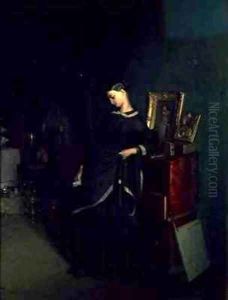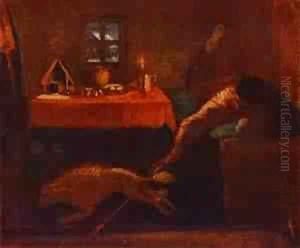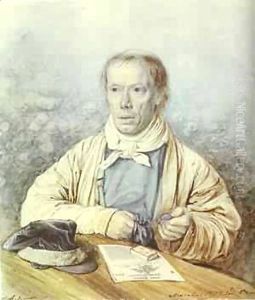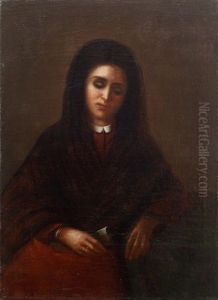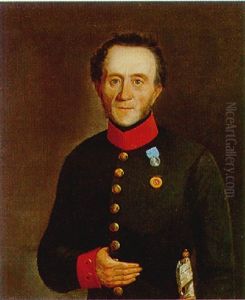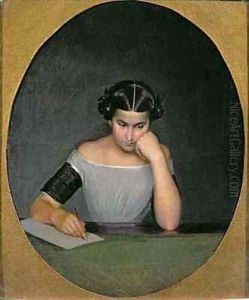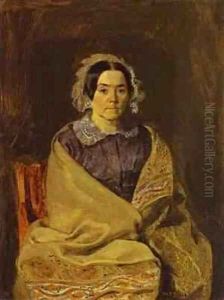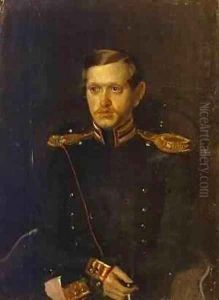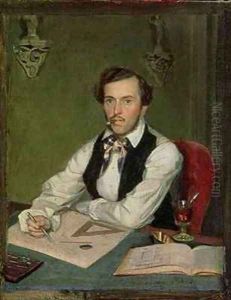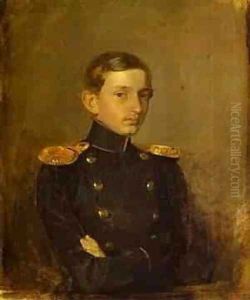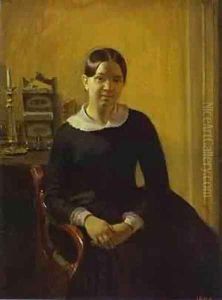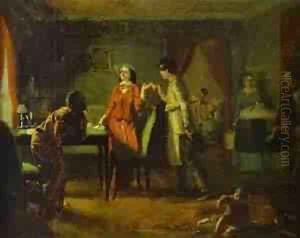Pavel Andreevich Fedotov Paintings
Pavel Andreevich Fedotov is considered one of the founders of Russian critical realism in art. Born on June 29 (July 11, New Style), 1815, in Moscow, Fedotov was initially destined for a military career and entered the Moscow Cadet Corps in 1826. He later transferred to the First Cadet Corps in Saint Petersburg, from which he graduated as an officer in 1834. While serving in the military, Fedotov showed an increasing interest in art, which led him to attend evening classes at the Imperial Academy of Arts.
Despite his military service, Fedotov's passion for art never waned, and he continued to develop his skills as a self-taught artist. Eventually, he resigned from the army in 1844 to dedicate himself fully to painting. Fedotov's works were unique for his time, as they often depicted the everyday life and customs of various social classes with a sharp satirical edge. He was particularly critical of the pretentiousness and moral decay he observed in contemporary society.
Fedotov's most productive period was in the 1840s, during which he created his most famous works, such as 'The Major's Marriage Proposal,' 'The Aristocrat's Breakfast,' and 'The Young Widow.' These paintings are characterized by their fine detail, nuanced character expression, and the use of subtle humor to critique social mores. Despite the acclaim, Fedotov's life was marked by personal tragedies and financial struggles. His health deteriorated, and he suffered from mental illness, which eventually led to his premature death on November 14 (November 26, New Style), 1852, in Saint Petersburg.
Posthumously, Fedotov's work gained recognition, and he was hailed as a pioneer of Russian genre painting, influencing later artists such as Ilya Repin. Today, Fedotov's art is celebrated for its historical significance and its insightful commentary on the social issues of his time.



